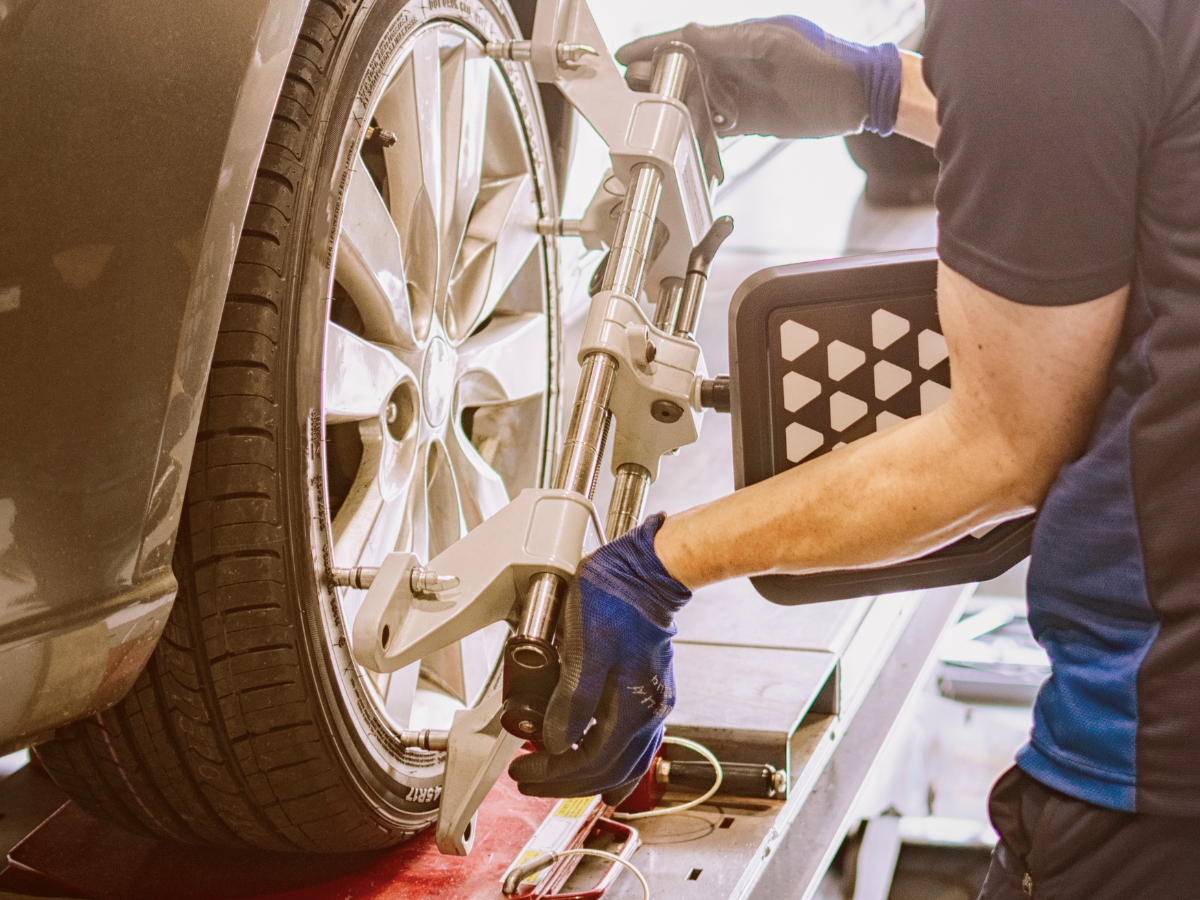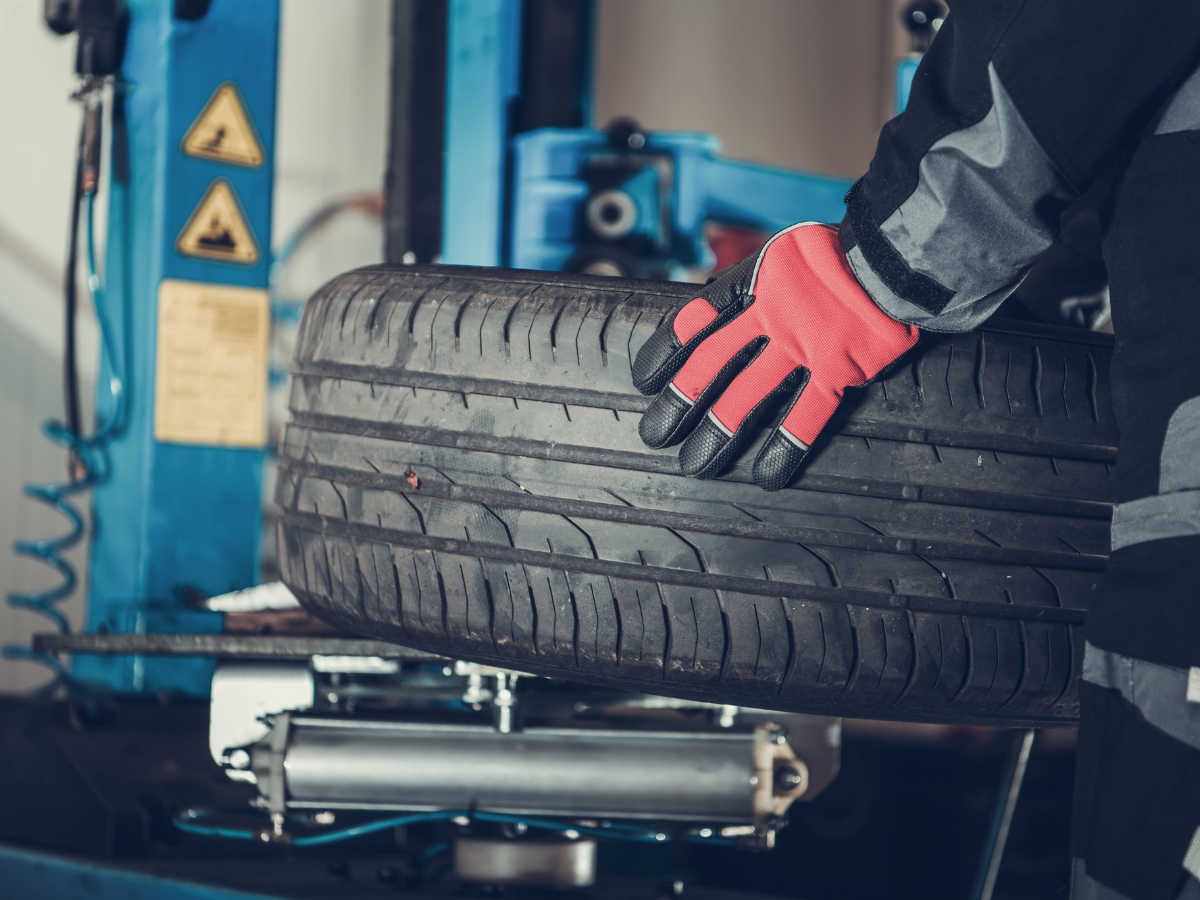Tire Alignment vs. Balance:
What’s the Difference and Why it Matters
Maintaining your vehicle is critical to ensuring its longevity and performance. Two critical aspects of maintaining your car are tire alignment and balancing. Tire alignment and balancing are often confused as being the same thing, but they are two separate processes that play a significant role in the overall health and safety of your car. In this blog post, we will delve into the differences between tire alignment vs. balance, and why they matter.
Signs Your Car Needs a Tire Alignment vs. Balance
It is crucial to pay attention to your vehicle’s performance and watch for signs that your tires may need an alignment or balancing. Here are some common signs that indicate your car needs an alignment:
⚠️ Your steering wheel is off-center or vibrating
⚠️ Your car pulls to one side or the other
⚠️ Uneven tire wear or abnormal tire noise
⚠️ Your vehicle feels unstable or has poor handling
If you notice any of these signs, it’s time to get your tires checked. On the other hand, here are some signs that indicate your car may need a balance:
⚠️ Vibration in the steering wheel or seat at high speeds
⚠️ Uneven tire wear or flat spots
⚠️ Your vehicle feels shaky or unstable
If you experience any of these symptoms, it’s time to have your tires balanced. Remember, both tire alignment and balancing are critical to your vehicle’s performance and safety. Regular maintenance can save you from costly repairs and ensure that your vehicle runs smoothly.
What is Tire Alignment?

Tire alignment, also known as wheel alignment, refers to the adjustment of your vehicle’s suspension system. It involves adjusting the angles of the wheels to meet the manufacturer’s specifications, which ensures that your car drives smoothly and efficiently. A tire alignment involves adjusting three angles: the camber, caster, and toe.
Camber is the angle between the vertical axis of the tire and the vertical axis of the vehicle when viewed from the front. If the top of the tire leans towards the car, it has a negative camber, while a positive camber is when the top of the tire leans away from the car. Caster, on the other hand, refers to the angle of the steering axis when viewed from the side. Finally, toe is the angle between the two tires when viewed from above. A tire can have a toe-in, where the front of the tires is closer than the rear, or a toe-out, where the front of the tires is further apart than the rear.
A proper tire alignment is essential for various reasons, including better handling, improved fuel efficiency, and prolonging tire life. Misaligned tires can cause excessive wear and tear on your tires, as well as cause your vehicle to pull to one side, which can lead to a potentially dangerous situation on the road.
What is Tire Balancing?

Tire balancing, on the other hand, refers to the distribution of weight around the circumference of your tire and wheel assembly. When you purchase a new tire, it is not perfectly balanced, and it requires balancing to ensure that it rotates smoothly without any vibrations.
To balance a tire, a mechanic uses a specialized machine to identify the heaviest part of the tire, which is then balanced out by placing small weights on the opposite side of the wheel. This process ensures that the weight is evenly distributed, which reduces vibration and increases tire life.
An unbalanced tire can cause vibrations and lead to uneven tire wear, which can be dangerous, especially at high speeds. It can also cause damage to your vehicle’s suspension and steering components.
The Difference Between Tire Alignment and Balancing
The primary difference between tire alignment and balancing is that alignment ensures that the wheels are perpendicular to the ground and parallel to each other, while balancing ensures that the weight is evenly distributed around the tire.
A tire alignment corrects the angle of the tires and ensures that they are in the correct position relative to each other and the road. A tire balance, on the other hand, ensures that the weight is evenly distributed around the tire, reducing vibrations and improving tire life.
While the two processes are different, they complement each other, and it is recommended that they are done at the same time. A tire balance is often performed during a tire alignment service, as it is more efficient to perform both services simultaneously.
Tire Alignment vs. Balance: Which is More Important?

Both tire alignment and balancing are essential for your vehicle’s health and safety. However, if you have to choose between the two, a tire alignment is more critical than balancing. This is because an alignment affects the overall handling and stability of your vehicle, as well as prolonging tire life.
An unbalanced tire, on the other hand, can cause vibrations and uneven wear, but it does not affect the overall handling of your vehicle. Therefore, if you have to choose between the two, prioritize getting your tires aligned.
However, it is essential to note that neglecting either service can lead to potential safety risks, and both should be performed regularly. The frequency of tire alignment and balancing varies depending on driving conditions and the age of your vehicle. It is recommended to have your tires aligned and balanced at least once a year or every 12,000 miles.
Tire Alignment and Balancing with Treads Tire Subscription
At Treads, we understand the importance of proper tire maintenance, which is why we offer tire alignment through our partner service centers and mobile balancing services at your home or work. When you subscribe to Treads, you get more than just new tires delivered and installed; you also get access to our partner service centers, where you can get your tires balanced at no additional cost, it is all included in your monthly subscription. Treads also now offers a separate alignment subscription, to help round out all the tire maintenance needs you may have.
Our subscription services includes a full suite of tire services, including rotation, balancing, and alignment, making it easy for you to maintain your tires and keep your vehicle running smoothly. Our expert mechanics use state-of-the-art equipment to ensure that your tires are correctly aligned and balanced, prolonging their lifespan and improving your driving experience.
In addition to tire maintenance, Treads also offers a hassle-free tire replacement program. With Treads, you can say goodbye to the hassle of tire shopping, installation, and disposal. We deliver new tires to your doorstep and install them at your convenience, and even dispose of your old tires for you.
Final Thoughts on Tire Alignment vs. Balance: Keep Your Tires in Top Condition with Treads Tire Subscription
In conclusion, tire alignment and balancing are two crucial aspects of tire maintenance that play a significant role in the overall health and safety of your vehicle. A tire alignment ensures that your tires are in the correct position, improving handling, fuel efficiency, and prolonging tire life. Tire balancing, on the other hand, ensures that the weight is evenly distributed around the tire, reducing vibration and increasing tire life.
While both services are essential, tire alignment is more critical than balancing. Neglecting either service can lead to potential safety risks, and both should be performed regularly. With Treads, you can take the hassle out of tire maintenance with our tire subscription service that includes alignment, balancing, and other tire services. Proper tire maintenance is critical for your vehicle’s longevity and performance, and Treads makes it easy for you to keep your tires in top condition.
Let’s Connect!
Let us know if you sign up for a tire subscription from Treads. We’d love to hear about any experiences you have had. Connect with us on our socials: Facebook, Instagram, or TikTok. We want your 🚙 🛞 stories!
Also for more information about a Treads Tire Subscription download the Treads App in the App Store or in Google Play and live chat with a team member with any questions you may have. We are always happy to help!






